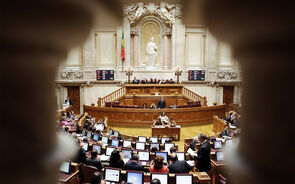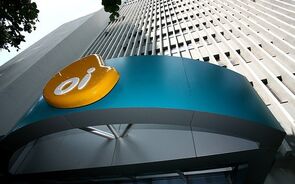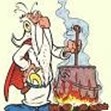A proposito de program trading e event risk...
3 mensagens
|Página 1 de 1
Muito bom artigo
Obrigado por partilhares 
A proposito de program trading e event risk...
Deixo-vos esta newsletter muito interessante que acrescenta algo ao debate de ontem sobre program trading e à conversa que tive à alguns dias c/ o Ulisses sobre event risk e o perigo de manter shorts abertos neste momento.
Um abraço, Eagle Eye
FEARLESS SHORT-TERM MARKET FORECAST: The Battle of the Program
Traders -- By Tobin Smith
Welcome to the trader's chess match. Our opponent -- war or peace
with Iraq -- has turned technical analysis into a VERY difficult
strategy. And there is another opponent in the ring now that has
made a difficult trading market even more difficult.
Our Chief Technical Analyst Sam Collins writes this morning, "We had
the second major reversal in two weeks comes within 77 points of the
first on Feb. 10. This means that we have established a major
support area and so near-term market action is now clearly bounded
by support at (yesterday's) low of (Dow) 7,700 and the top of the
recently formed flag at 8,000. A violation of (yesterday's) low
would put the October lows into immediate jeopardy, while a breakout
above 8,000 would establish a strong support base that might hold in
the face of further bad news. For the other indexes those
support/resistance numbers are now S&P 800-850 and Nasdaq
1,275-1,350."
Fine--I agree with everything he says from a technical analysis
perspective. Here is my problem with technical analysis right now:
Something very fishy is going on in the markets that lie behind the
charts.
That fishy smell comes from historic rates of program trading--huge
institutional investors trading million of shares in the electronic
markets OFF the trading floor. Without the boost from huge program
trades on Tuesday afternoon, my numbers show we would have only come
25-30 points off the bottom yesterday, and we should have closed
down 75 points instead of up 50.
Around 2 p.m. Tuesday, we got massive computer trades of big cap
stocks and BOOM -- we close 50 points higher, a 150-point reversal.
So far this week, almost 60% of Dow trades look to be program
trades. This computer-based trading has literally taken over the
market in the short term.
Who makes these trades? Hedge funds and quantitatively managed
pension funds. Why do they do them? Because they fear being too
short and they fear being too long. And some fear getting regulatory
margin calls that will put million-dollar and billion-dollar
investors out of business for good.
The trillion dollars of "market neutral" hedge funds that own
similar percentages of long/short positions hit their buy buttons
around 2:30 and 3 yesterday--they were too short. Quantitative
pension fund allocation plans' orders (shifting from bonds to
stocks) hit the computer-linked trading platforms yesterday at the
same time. They were too long bonds.
If you look at the NYSE Members report for last week (What? You mean
you don't?), you see "other trades" (read: program trades) equaling
over 60% of trading, with more net selling than buying.
All this tells me there are some VERY nervous short funds and
insurance companies out there making HUGE shifts in their
positions--which accounts for the huge volatility.
THE INSURANCE EFFECT
We are witnessing financial brinksmanship in global insurance land.
You must realize we have multi-billion dollar European insurance
companies facing multi-billion dollar portfolio losses that are
getting the equivalent of margin calls from regulators every day.
European insurance companies have written trillions of dollars of
fixed-return policies and invested 50%-60% of that premium into
stocks.
They now face hundreds of billions in losses, so they are raising
capital by selling stocks. All stocks, including U.S. and European
stocks. AXA and Swiss Re cut dividends today. AEGN, Alliance
Municipal Reinsurance hit 10-year lows. Royal Sun Alliance, a
British insurer with huge exposure to the stock market, hit a
20-year low today.
Today it's the foreign insurers, tomorrow we have the U.S. brokers
ready to get hit with class-action suits over the IPO transgressions
of 1999-2000. (Did you really think those IPO's shooting up
300%-400% in one day happened because the companies were so great?)
Meltdown after meltdown after meltdown--even the low-tech grocery
business takes a hit with a 70% meltdown on Royal Ahold.
Are you now just a little more ready to join us in the relative
luxury of safety in our Bear/Terror-Proof Investment strategy? We
actually had some of our "Ballast Income" investment hit new HIGHS
yesterday instead of 20-year lows.
This brings us back to the technicals. Clearly the shorts are
getting scared at Nasdaq 1,320, get more scared at 1,300, and can't
stand the fear at 1,250-1,270 and around 7,750 on the Dow. Traders
figure one Iraqi peace deal could cost them dearly and expect a 10%
melt up. So they close short positions around the Nasdaq 1,290 and
Dow 7,750 level--these are the trading pivot points for the short
term.
Sound too crazy for your blood? Good, it should. The bull/bear
battle is monumental at this juncture and too crazy for most
investors who do not have trading desks that can execute program
trades in and out of stocks in seconds.
My advice? Clip coupons and watch your income stocks inch higher and
higher every day. Join us in the "sane asylum." (See item 3 in
today's WaveWire for more information.)
Toby
Um abraço, Eagle Eye
FEARLESS SHORT-TERM MARKET FORECAST: The Battle of the Program
Traders -- By Tobin Smith
Welcome to the trader's chess match. Our opponent -- war or peace
with Iraq -- has turned technical analysis into a VERY difficult
strategy. And there is another opponent in the ring now that has
made a difficult trading market even more difficult.
Our Chief Technical Analyst Sam Collins writes this morning, "We had
the second major reversal in two weeks comes within 77 points of the
first on Feb. 10. This means that we have established a major
support area and so near-term market action is now clearly bounded
by support at (yesterday's) low of (Dow) 7,700 and the top of the
recently formed flag at 8,000. A violation of (yesterday's) low
would put the October lows into immediate jeopardy, while a breakout
above 8,000 would establish a strong support base that might hold in
the face of further bad news. For the other indexes those
support/resistance numbers are now S&P 800-850 and Nasdaq
1,275-1,350."
Fine--I agree with everything he says from a technical analysis
perspective. Here is my problem with technical analysis right now:
Something very fishy is going on in the markets that lie behind the
charts.
That fishy smell comes from historic rates of program trading--huge
institutional investors trading million of shares in the electronic
markets OFF the trading floor. Without the boost from huge program
trades on Tuesday afternoon, my numbers show we would have only come
25-30 points off the bottom yesterday, and we should have closed
down 75 points instead of up 50.
Around 2 p.m. Tuesday, we got massive computer trades of big cap
stocks and BOOM -- we close 50 points higher, a 150-point reversal.
So far this week, almost 60% of Dow trades look to be program
trades. This computer-based trading has literally taken over the
market in the short term.
Who makes these trades? Hedge funds and quantitatively managed
pension funds. Why do they do them? Because they fear being too
short and they fear being too long. And some fear getting regulatory
margin calls that will put million-dollar and billion-dollar
investors out of business for good.
The trillion dollars of "market neutral" hedge funds that own
similar percentages of long/short positions hit their buy buttons
around 2:30 and 3 yesterday--they were too short. Quantitative
pension fund allocation plans' orders (shifting from bonds to
stocks) hit the computer-linked trading platforms yesterday at the
same time. They were too long bonds.
If you look at the NYSE Members report for last week (What? You mean
you don't?), you see "other trades" (read: program trades) equaling
over 60% of trading, with more net selling than buying.
All this tells me there are some VERY nervous short funds and
insurance companies out there making HUGE shifts in their
positions--which accounts for the huge volatility.
THE INSURANCE EFFECT
We are witnessing financial brinksmanship in global insurance land.
You must realize we have multi-billion dollar European insurance
companies facing multi-billion dollar portfolio losses that are
getting the equivalent of margin calls from regulators every day.
European insurance companies have written trillions of dollars of
fixed-return policies and invested 50%-60% of that premium into
stocks.
They now face hundreds of billions in losses, so they are raising
capital by selling stocks. All stocks, including U.S. and European
stocks. AXA and Swiss Re cut dividends today. AEGN, Alliance
Municipal Reinsurance hit 10-year lows. Royal Sun Alliance, a
British insurer with huge exposure to the stock market, hit a
20-year low today.
Today it's the foreign insurers, tomorrow we have the U.S. brokers
ready to get hit with class-action suits over the IPO transgressions
of 1999-2000. (Did you really think those IPO's shooting up
300%-400% in one day happened because the companies were so great?)
Meltdown after meltdown after meltdown--even the low-tech grocery
business takes a hit with a 70% meltdown on Royal Ahold.
Are you now just a little more ready to join us in the relative
luxury of safety in our Bear/Terror-Proof Investment strategy? We
actually had some of our "Ballast Income" investment hit new HIGHS
yesterday instead of 20-year lows.
This brings us back to the technicals. Clearly the shorts are
getting scared at Nasdaq 1,320, get more scared at 1,300, and can't
stand the fear at 1,250-1,270 and around 7,750 on the Dow. Traders
figure one Iraqi peace deal could cost them dearly and expect a 10%
melt up. So they close short positions around the Nasdaq 1,290 and
Dow 7,750 level--these are the trading pivot points for the short
term.
Sound too crazy for your blood? Good, it should. The bull/bear
battle is monumental at this juncture and too crazy for most
investors who do not have trading desks that can execute program
trades in and out of stocks in seconds.
My advice? Clip coupons and watch your income stocks inch higher and
higher every day. Join us in the "sane asylum." (See item 3 in
today's WaveWire for more information.)
Toby
Carpe Diem
- Mensagens: 108
- Registado: 5/11/2002 2:31
3 mensagens
|Página 1 de 1
Quem está ligado:
Utilizadores a ver este Fórum: Bing [Bot], Kiko_463, mjcsreis, PAULOJOAO, trend=friend e 59 visitantes



